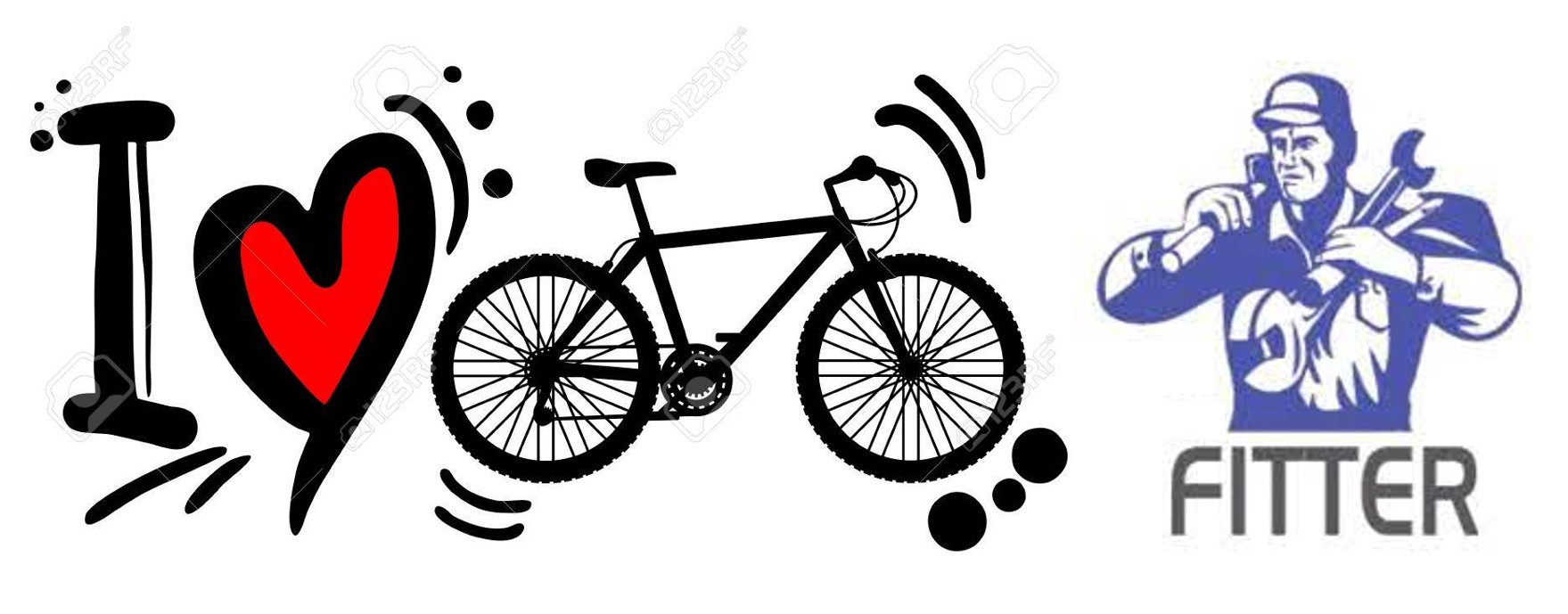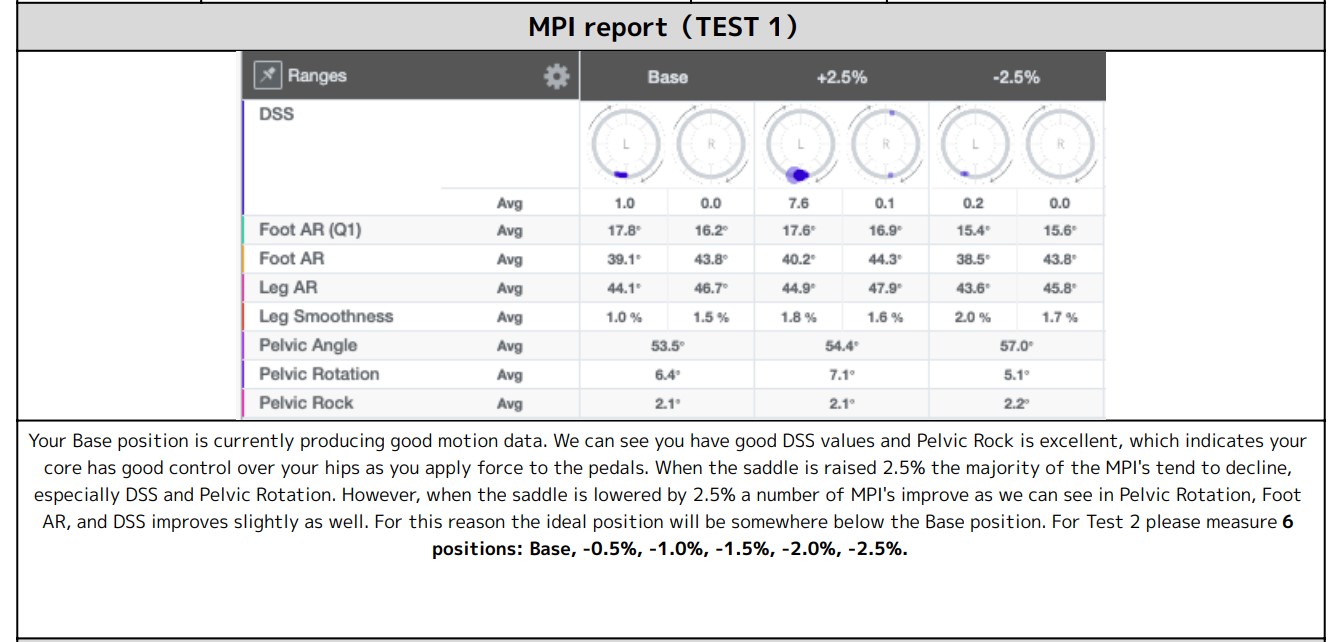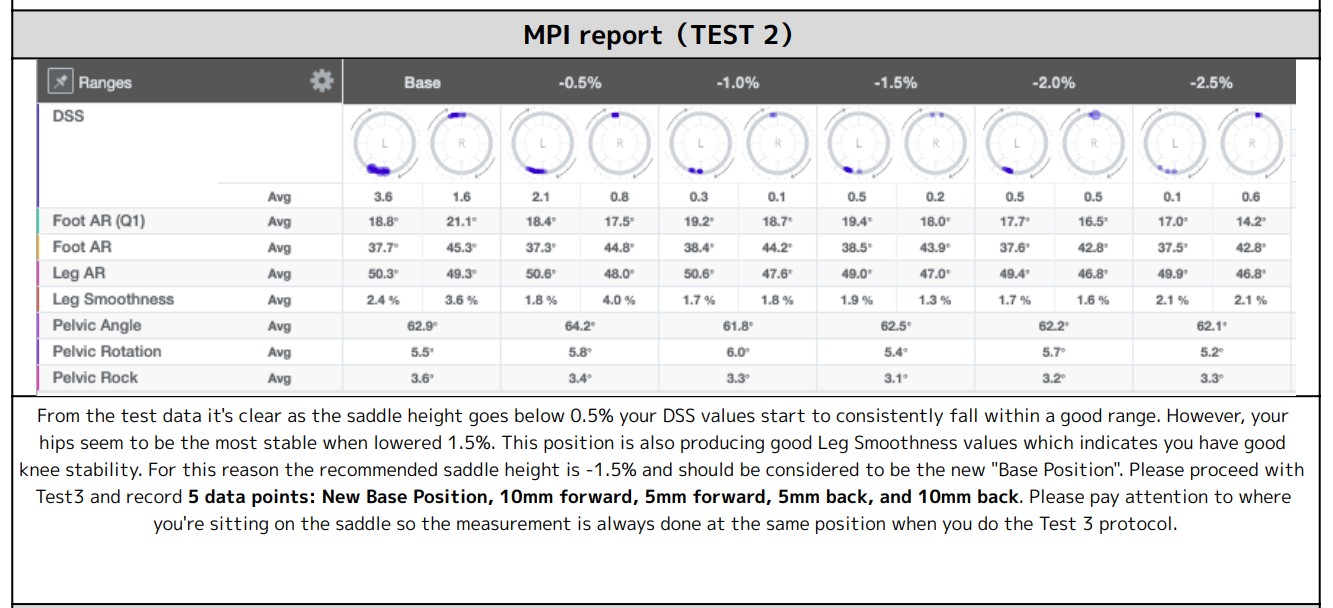IS A REMOTE BIKE FIT A GOOD OPTION?
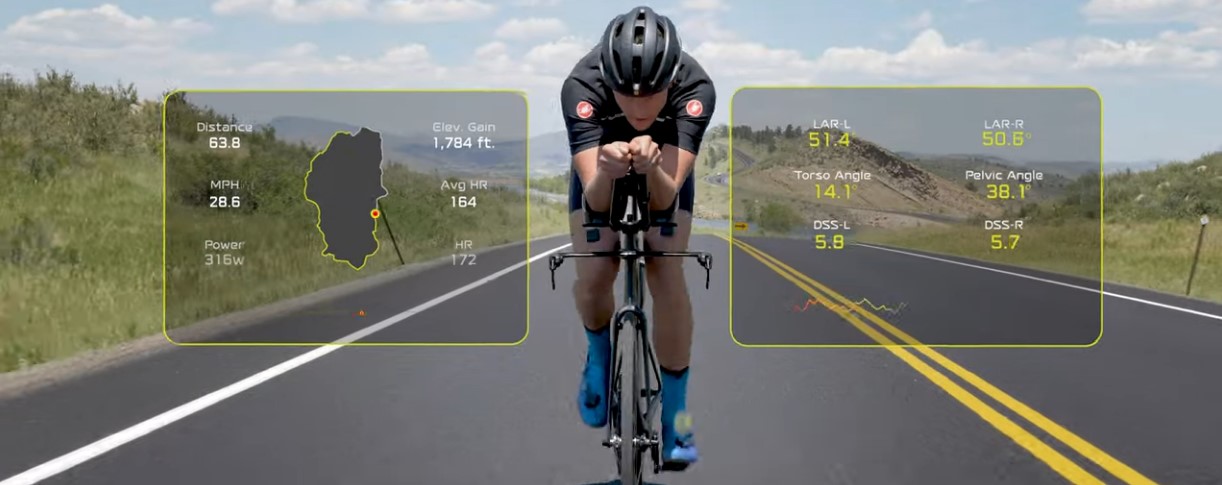
There’s almost nothing better for your cycling than a good bike fit. But, a great bike fitter is almost as hard to find as a life partner. And unlike the best life partners, fitters are not monogamous or even mildly polygamous. Instead, they are more like a rabbi or pastor tending to congregants one at a time.
During the worst outbreaks of Covid, you can’t see your bike fitter. This is almost as bad as not being able to see some of your family members (or maybe worse, depending on your family). And with some bike stores and fitting studios opening up as Covid ebbs in some parts of the world, bike fitters have such a backlog that it may take longer to see yours than it does to get your vaccine shot. Both doses. That’s certainly been my experience.
Like too many would-be life-partnerships, some cyclist-fitter relationships end in separation or don’t last beyond your first fitting fling. You or your fitter may move or already live too far away to make it last. The demand for a truly great bike fit and fitter may outstrip the supply of time they have to serve their flock, even in a non-pandemic world.
And that presumes you’ve found a suitable bike fit “roll mate” in the first place. They’re the one person you can trust to size up your stack and reach measurements before you set out to find the right size and geometry for your next bike.
Using some combination of experience, exercise science, technology, and zen, they’ll place you in the right position on your bike with a range of component realignment and resizing.
They’ll put your hips and knees at ease for the type and length of riding you do and put all your body parts in their optimal spots to get the max watts out of your muscles.
Naively, some cyclists think a fit is merely about adjusting the saddle height on whatever bike you fancy, something a bike salesperson with a basic tool and an eye on the sale will often readily do at no added cost to help make the sale. A good fit is so much more than that.
A Remote Bike Fit Service
As I waited and waited to get put on the schedule for my annual update with my own fitting shaman Andy, LEOMO contacted me.
No, LEOMO isn’t a person or even a thing. Rather, it’s a company that offers a remote service designed to give you a bike fit without ever leaving the comfort of your home smart trainer.
LEOMO’s marketing director sent me an email outlining the service and asked if I’d like to try it out.
Talk about good timing! I was intrigued and after reviewing the service, I agreed to give it a go.
Looking around online for other remote services, I mostly saw descriptions of bike fitters offering to analyze videos of me riding on my trainer. They’d provide fit recommendations similar to the way they would if I was in their store and for a similar price but without the rigs, jigs, and analysis technology many will use when you’re in person.
By contrast, for the price of the most basic, half-hour or so, technology-free bike fit you can get in a store, LEOMO sends a fit kit that you rent and return after about 10 days to do several fit tests. Their “TYPE-S “ kit includes a head unit-like computer, sensors that go on your shoes, thighs, and lower back to record your motion, and a detailed test protocol you follow.
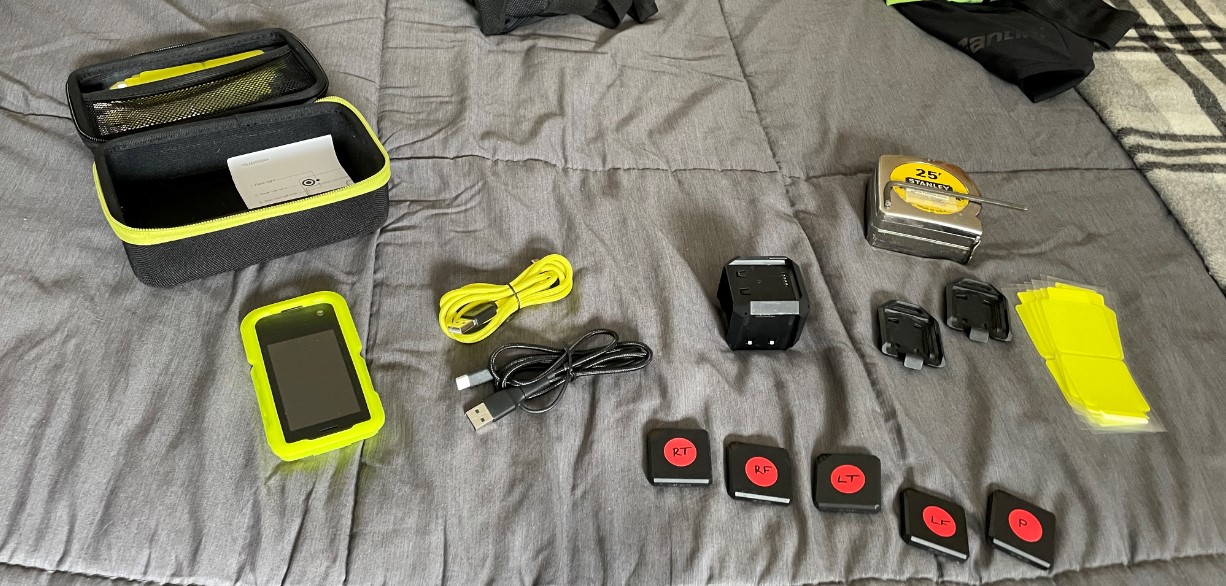
The LEOMO Type S bike fit kit comes with a head unit and sensors you stick on to your lower back, thighs, and shoes.
They offer a 2-test (Basic plan – $99) or 3-test (Standard plan – $132) option that takes between 30-45 minutes of riding time per test plus the time to adjust the saddle position 3-6 times during each test. You do this on your trainer and don’t need to record any video.
After each test session, you upload your results to LEOMO and one of their customer support fit advisors assesses your results against a group of motion performance measures they’ve developed. Using those results and your stated cycling goals and challenges, you get saddle position adjustment recommendations to improve your bike fit with those goals, challenges, and the kind of events you do in mind.
So how did it work for me?
To be sure, it’s not the complete fit I suggest you do if you’ve never had one before, are getting ready to buy a new bike, are feeling a new pain, or have recently recovered from a serious injury.
But for the price and with the precision I found LEOMO provides an enthusiast like me, it’s a very good annual or biennial bike fit tune-up and perhaps an enhancement on top of your baseline fit. It can also be done in a more efficient and timely way if you don’t live close to your regular fitter or their availability (or yours) is limited.
I’ll say more about all of that in the next to sections.
[Note: I don’t have any business, endorsement, or influencer relationship with LEOMO (or any supplier) and get no benefit from them if you use their service. While they provided the 3-test plan to me at no charge, I only completed the first two tests and did so on an older bike that’s dedicated to my trainer. That was enough for me to experience the service and evaluate it for this review.
To be sure that I got no value from using the LEOMO service and could share my independent assessment with readers without any appearance of bias or conflict, I’ve returned my saddle to its original position. Also, the recommendations made for the saddle position on my trainer bike don’t translate to those on my everyday road and gravel bikes.]
What LEOMO Doesn’t Do
If you are a serious cycling enthusiast and want to get the most out of your training, your equipment, and all the time you spend on the road, you should get a comprehensive bike fit. If you don’t, you’re limiting your performance and comfort, and potentially setting yourself up for injury.
Indeed, getting your bike fit ranks #4 on my list of how to ride faster on your bike. And in case you’re curious, that places it well above any gear or kit you can buy including aero or light bikes, wheels, close-fitting clothing, etc.
What constitutes a “comprehensive bike fit” is another discussion altogether. Most will take at least a couple of hours and several hundred dollars. It will draw on both the experience of the fitter and a fair amount of tools and technology to address what you uniquely need. You’ll also often need to add or trade out some bike components to make your improved fit possible.
I can say with good confidence and from my own experience that a comprehensive bike fit needs to give the fitter the flexibility to specify or fit most everything on the bike. Commonly that includes helping you chose the frame size and geometry before you purchase a bike and changing some combination of the following for either your new or existing bike: saddle, saddle position, stem height, length and angle, bar shape or bar width, crank length, pedal spindle length, cleat position, footbeds, and shoes.
When I bought my last rim brake bike about 10 years ago, I didn’t know anything about fitting and even that I should get one before buying a bike. After throwing my leg over the two major brands of bikes in the store, the salesman judged me to be a size 54 in the bike I was most interested in, adjusted the seat height after I sat on it with one leg fully extended, and sold me the bike.
A few years later, as a combination of more riding and some surgery to clean up one of my knees made me want to perform better and with less pain, Andy gave me my first real bike fit. He started off with a questionnaire, flexibility assessment, and video motion analysis of me pedaling on a bike fitting jig.
After a lot of trial and adjustment, I ended up with a new, more comfortable saddle sized for my sit bone measurements with its position adjusted. He added a new stem at the right length and angle and a fair number of added headset spacers to bring my legs, back, and arms into the right position. All of this was done to allow me a more efficient pedal stroke and to put out more power while riding with more stable hips and greater overall comfort.
Some of the adjustments and additions could have been avoided had I been fit before buying my bike. I would have ended up on a size 56 bike without some of the Frankenbike look going on from the stem and headset changes on my 54.
My hips and knees are pretty beaten up from years of ski racing and coaching. So I also needed pedals with longer spindles and more float to ride pain-free on the bike. Footbeds with more arch support, a wedge in one shoe, and a slightly offset cleat on the other completed the fit.
After that comprehensive bike fit that cost me $300 for the fit “labor” and another $400 for the “parts”, I’d never felt as good for as long over a season on a bike. I felt free of whatever had held me back from doing what I wanted on two wheels.
Every year or so since then, I’ve come in to see Andy for a fit update check if any further adjustments were needed due to changes in my flexibility or a broken leg from one crash and a broken collar bone from another. That, along with some evolution in the understanding of body mechanics and bike components, resulted in me getting a crankset with shorter crankarms.
A few years on and it was time to buy a new road disc bike. I went back for a comprehensive bike fit once again and learned about stack and reach, what mine is, and how important and helpful they are in picking out the right size and geometry bike.

You’ll get the best performance and comfort from a bike that fits your measurements and flexibility. Endurance (l) and aero (r) bike geometries showing stack and reach. Credit: reduxracers.com
Stack and reach have become the primary way most bikes are sized these days. Yes, there are still the 52, 54, 56 or S, M, L sizes for those traditionalists amongst us, but they are pretty useless as a way to pick out the right size for you.
Indeed, I picked out my last two bikes after starting with a handful whose stack and reach were quite close to mine. (You can do that for current year bikes from the tables I put together here.) I specified the stem length, bar width, and crankarm length based on my earlier comprehensive fit, and bought another saddle and set of pedals sized the same as on my rim brake bike.
The post-purchase bike fits on my new bikes have been uneventful. A slight saddle position adjustment and perhaps the removal of one headset spacer and it was off to the races or, in my case, group road or gravel rides.
In the few years since buying those bikes, I’ve been back in to see Andy for a fit update for each. While there’s been nothing major that’s changed with my body, I’ve gotten older, ridden more each year, am doing more yoga to improve or at least maintain my flexibility, do some weight lifting, am testing and riding new shoes, and ride more off-road in different positions than those on the road.
These bike fit updates are typically about an hour or so, use motion capture technology and video analysis, and have confirmed that nothing major needs to be changed. Andy has made minor adjustments in the saddle or cleat position. Like a good check-up, if more were needed or something was out of alignment, this update would likely catch it before I developed a pain or injury situation on the bike.
A bike fit update also gives you a chance to take advantage of new learning or better approaches to fitting. I moved to shorter cranks after one of my updates at a time when a new appreciation of its benefits had emerged amongst bike fitters.
And I’m always up for seeing how I can improve my mechanics and positioning through updated analysis to squeeze a few more watts and a few more comfortable miles out of my rides.
To be clear, LEOMO’s bike fit focuses on saddle position adjustment to improve the efficiency and stability of the muscles around your hips, the movement of your hips, knees, and ankles, the angle of your pelvis, and the efficiency of your pedal stroke. It doesn’t suggest any changes you might need to the cockpit or drivetrain components or shoes similar to what I needed after my first comprehensive fit.
As such, it’s not a comprehensive bike fit and you won’t get the stack and reach measurements I believe are necessary to pick out your next bike.
Rather, LEOMO is more of a bike fit update or enhancement. While it doesn’t benefit from the data developed by your fitter during their comprehensive bike fit, the LEOMO fit approach takes a fresh, data-rich, and iterative, motion-analyzed look at the effects of saddle position on your muscles and joints from your hips to your feet and applies that data to give you a saddle position best suited to your event type and performance goals.
What LEOMO Does Well
The LEOMO process starts with you filling out some basic body size and info about your cycling frequency and power level. Critically important, you also detail your cycling goals and challenges.
Someone who is looking to win a spot at a future Ironman world championship and struggles to have enough after the ride portion for the run would likely get a different fit approach than a more upright riding century rider whose main challenge is depending too much on their quads for their power. A crit and road race rider who accelerates frequently and is in the wind a lot would benefit from still another range of positions on the bike made possible by their fit.
LEOMO also wants to know whether you have a smart trainer, cadence sensor, and power meter. While not required, having them certainly allows you to more consistently follow the warm-up and test protocol for better comparative results within a test session.
Finally, and this bit is critical, you need to be able to change your own saddle height and fore/aft position with some level of precision. If you can’t, well, wait for your fitter to make time for you.
After I filled that info out, Neal, the LEOMO customer support person assigned to do my bike fit, emailed me a proposed schedule starting with the day I’d receive the Type S fit kit (Monday), the days I’d do the tests (Tuesday, Thursday, and Sunday), when I’d get feedback (the day after each test), and when I would return the kit (Tuesday).
So it would all get done, and in my case did, in just over a week.
On each of the test days, I spent about an hour for the entire process. This included setting up the computer and attaching the wireless sensors to my body, doing the warmup and tests, adjusting the seat for each test, uploading the data, and reorganizing the test kit.
The protocol calls for doing 15 minutes of warmup with increasing intensity followed by 3 minutes of at your functional threshold power, settling back to 80% of your FTP and then holding that power and a steady cadence for a minute after you hit the lap button to start a test.
At the end of that minute, you hit the lap button again to end the test, get off the bike, adjust the seat per the test instructions for the next test, get on the bike and ride it at Zone 2 for 3 minutes while you get used to the new position and then ramp it up to 80%, settle there for a bit and then do another 1-minute test.
On the first day, I tested at my baseline saddle position and then tested again after adjusting the saddle 2.5% higher and then 2.5% lower. On the second day of testing, with Neal’s explanation of how my performance improved from lowering the seat vs. raising it, I tested at 0.5% lower increments between my baseline height and 2.5% lower.
The results from those tests showed I’d be best at 1.5% or about 10mm lower than my original saddle height. The instructions for completing the third day of testing, had I completed it, had me doing all tests with the saddle at this lower height but moving the saddle 5 and 10 mm forward and back off this new baseline.
It didn’t take me long to appreciate the value of all of the setup, saddle measuring and moving, and real-time analysis that Andy, my regular fitter does when I’m testing at his shop. When he does the bike fit, I just need to focus on sitting in the same place on my saddle, getting warmed up, keeping my cadence steady and eyes forward, and getting off the bike at times so Andy can make the adjustments.
We also get it done in a few hours and on one day.
If you’re not up for doing the work and spending the time for what is essentially a multi-step DIY fitting process with the input of LEOMO’s analysis between steps, their remote fit isn’t for you. But if you are a cycling data junkie with some basic mechanical skills and a tape measure in search of a fit update or enhancement with what looks like a lot of science behind it and want to save a few bucks, the LEOMO fit is catnip.
My wife tells me I am indeed different (or crazy or weird or other things) in my attention to bike details and willingness to do some repairs and maintenance some of my friends leave to their trusted shop wrenches. However, I do think there are plenty of other cycling enthusiasts out like me for which this remote bike fit update or enhancement value proposition hits home.
But to be sure, I’m certainly not a fitter and don’t have a good way to evaluate or compare bike fits or fitters. I only how the fitting I’ve had done has made me stronger and more comfortable on the bike and helped me pick out new bikes that suit my body size and mechanics.
Much of what bike fitters do requires a fair bit of training, apprenticeship, and art they acquire after traveling a range of different paths. On top of that, they often use fit systems and technology from bike fit services like Retul or bike companies like Specialized and Trek that are a bit of a black box, at least to cycling consumers.
In contrast, LEOMO’s approach is quite transparent. Also, the way my fitter Neal communicated to me about why he recommended specific saddle adjustments was clear and linked to their explicit measurement metrics.
LEOMO Measurements and Test Experience
LEOMO uses 8 MPIs or Motion Performance Indicators or metrics that measure what’s going on at your pelvis or hips, legs, and feet. If you are a time trialist or triathlete, they have another 3 MPIs that measure the movement of your torso.
The sensor you put on your sacrum or lower back measures the angle of your pelvis and how much it rotates and rocks when you increase the amount of torque you apply to the pedals and with accumulated fatigue.
Clearly, if you are a triathlon or TT racer and have the hip flexibility to pull it off, you want your seat positioned to give you a smaller pelvic angle from horizontal to make you more aero for a longer time than a road racer would need and who, in turn, would want a smaller angle than a recreational rider. In all cases though, you want to minimize how much your pelvis rotates or rocks.
The sensors you place on your left and right thighs measure the angle difference in each thigh between when it is at their highest and lowest points as your legs pump out each stroke and how smoothly the thighs lower during the downstroke.
The 2 MPIs that come from these sensors tell you how wide and smooth the range of motion is coming out of your hips. The values tell you how well you are using the muscles from your hips down through your knees. Too small a range of motion or too much unevenness during the stroke means you want to raise your saddle but not so much that your pelvis/hips become unstable as measured by the pelvic rock and rotation measures.
Finally, there are 3 MPIs that tell you what’s goes on at your feet – how smooth your pedal stroke is, how much the angle from your toes to your heel varies during your stroke, and how much heel variation there is especially during the 12:00 to 3:00 phase of your stroke when you are putting out your max power.
As you might expect, if your saddle is too high you’re likely to have dead spots or bigger variances in your heel angle during the stroke.
For each of the MPIs, LEOMO charts your test performance for each leg and at each height. You can see my Test 1 results below which guided Neal’s analysis and the refined positions for Test 2
After measuring my results at the 6 different saddle heights during Test 2, you can again see Neal’s analysis, what he recommended for my new saddle height, and the positions fore and after of center for Test 3. (I didn’t do Test 3 for the reasons I mentioned earlier.)
The big differences in pelvic angle between the same saddle height positions in Test 1 to Test 2 and the higher angle at the recommended -1.5% height vs. -1.0% gave me the opportunity to question Neal about the LEOMO protocol and rationale.
He thoughtfully responded that where you place the sensors from one day to the next varies enough that the best comparisons are within a given day’s tests. (I’d also suggest you use a sharpie to mark them to get closer than I did.)
As to my pelvic angle being lower and my body more aero at -1.0%, he correctly referred back to my initial information sheet that indicated I was an endurance rider (and not a triathlete or aero road racer) and that the other MPIs showed that my pelvis or hips were more stable and therefore would fatigue less over long rides at the -1.5% level.
Point taken!
While LEOMO’s remote fitting service was introduced during the pandemic, it draws on a half dozen years and 1000+ tests of elite athletes. Their motion analysis research includes both cycling and running. From their research and athlete experience, they’ve developed an MPI Evaluation scorecard for cyclists (and different ones for runners) to show you where your values fall.
While this road cycling enthusiast is certainly not at the elite level, it was encouraging to see that my prior comprehensive and updated bike fits got me into a good or excellent range along most of the MPIs to start with. From their MPIs and scorecard, I could see how the LEOMO remote bike fit would help me update or enhance the fit.
A Bike Fit Service You Should Consider?
After finishing the tests and sending back the fit kit (box and shipping label was included in the original package), I got on the phone with Neal and a couple of the development folks from LEOMO. I wanted to better understand where they felt their service stood in the bike fit landscape, what range and number of cyclists they can serve, and how their service might evolve to provide a broader capability to do things that comprehensive services do now or others that they don’t currently offer.
While they didn’t disagree with my view that LEOMO isn’t a comprehensive fit, they shared that they’ve done remote bike fits for riders ranging from weekend warriors to elite racers. While I can see value for cyclists across that range, I think enthusiasts will end up being the sweet spot for their service.
While it’s a remote service that a cyclist does when it’s convenient for them, it’s a fairly “high touch” one that requires LEOMO to interact with customers frequently along the way. With this in mind, Neal and his fellow remote fitters are doing a half dozen fits each week.
Frankly, Neal told me, the bigger challenge for them in doing more fits is the time it takes for the customer to do their tests. Turns out that 3 test sessions in a week isn’t a pace that most customers are able to keep to.
For those looking for more than the kind of bike fit update or enhancement, the LEOMO sensors and service have a good deal of range beyond what I’ve described above.
There’s certainly no reason you couldn’t do their tests out on the road in conditions that mirror your own riding or race terrain, efforts, and fatigue. Indeed, former world tour pro and ultimate gear head Adam Hansen did a 45-minute webinar you can watch here on Youtube that shows the range of what LEOMO can do.
And, if you want to regularly update your fit across several bikes, LEOMO also has a package where you buy the Type S fit kit and get a huge discount on the remote testing service.
Seeing how busy bike fitters are now and likely to be as this bike boom continues, and considering the limited number of alternatives, none of which I’ve found seem to offer the sophistication and value of LEOMO’s remote service, I see this as a good option for handy enthusiasts who’ve got the discipline and desire to get a bike fit update.
This site is independent, ad-free, and reader-supported. When you buy through links on our site, we may earn an affiliate commission that helps cover the costs of bringing reviews and other free content to you. Read more about us.
Follow us on facebook.com/itkcycling | twitter.com/ITKCycling | instagram.com/itkcycling
